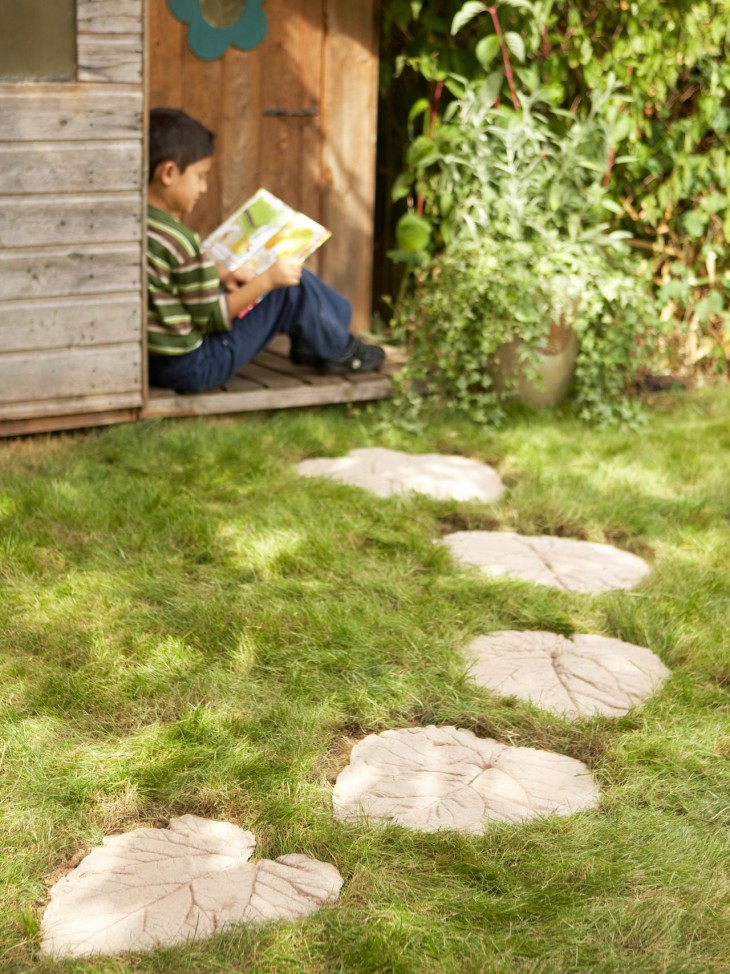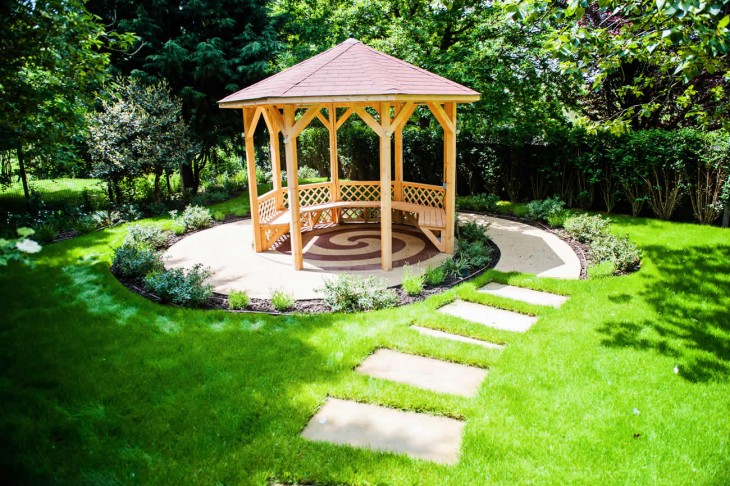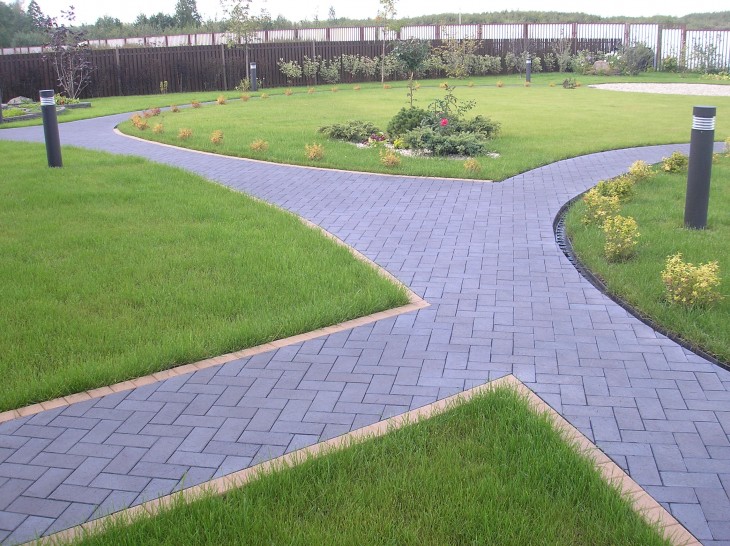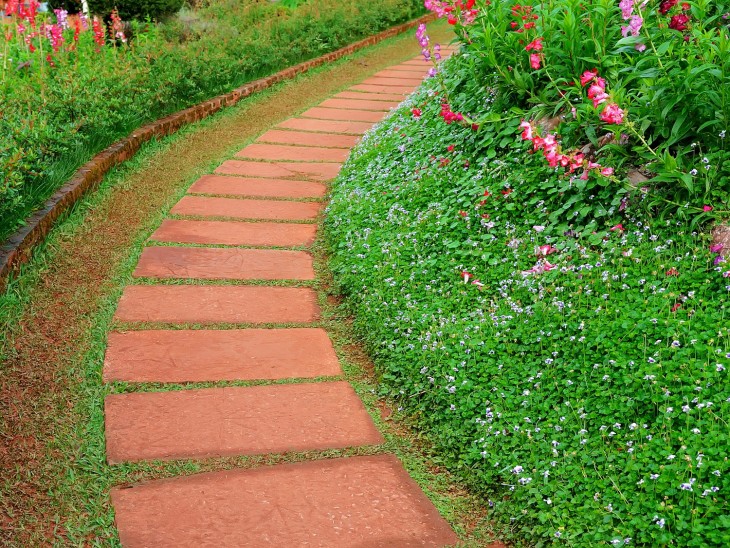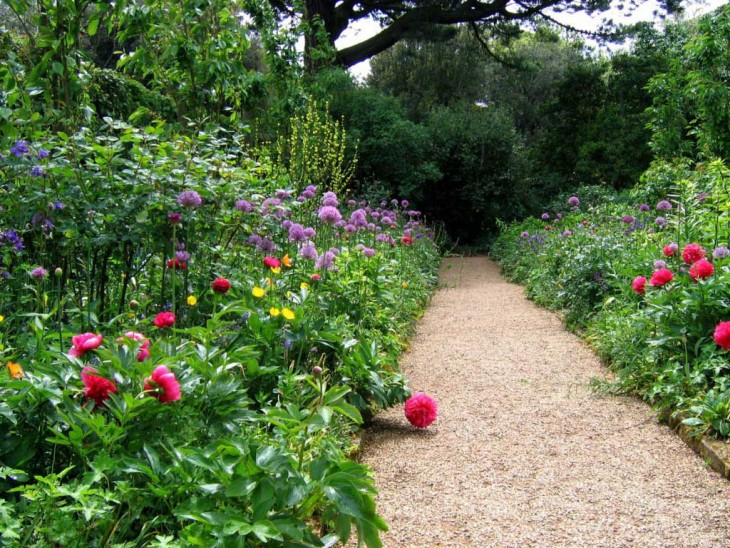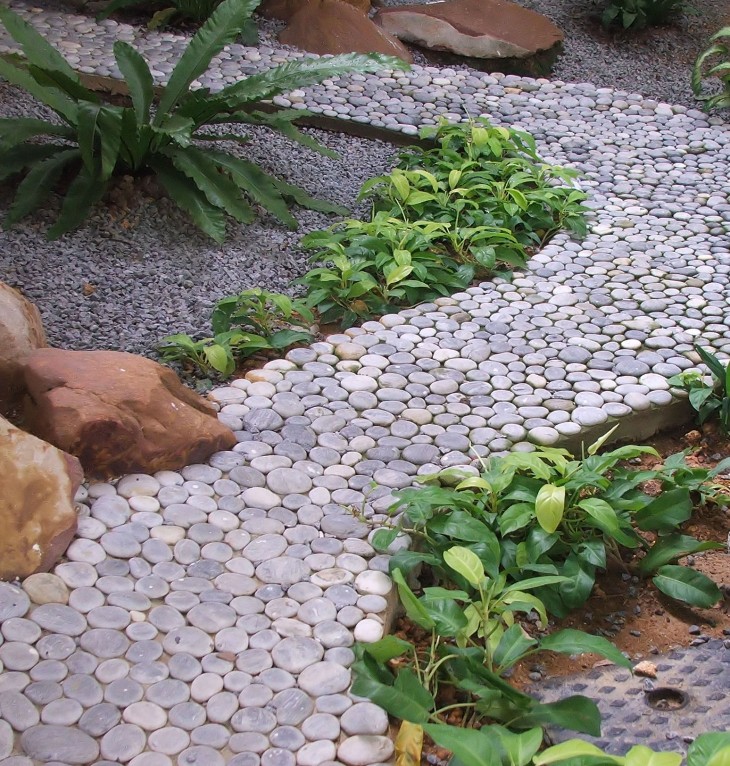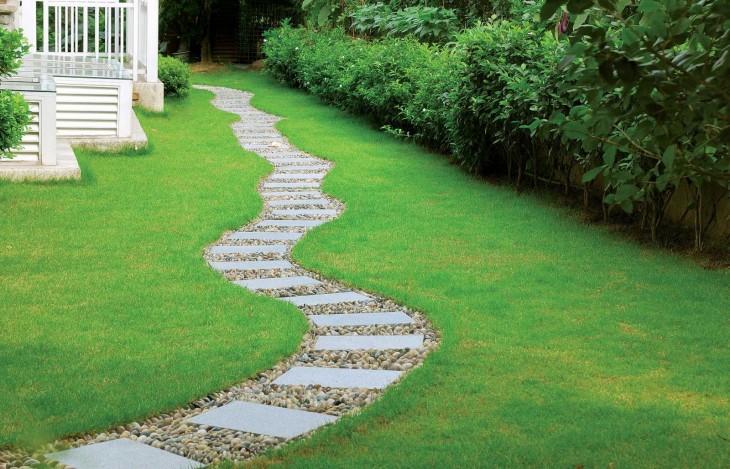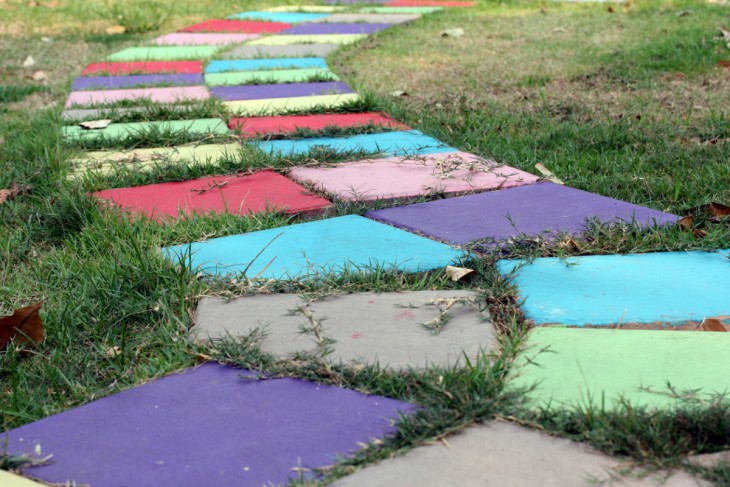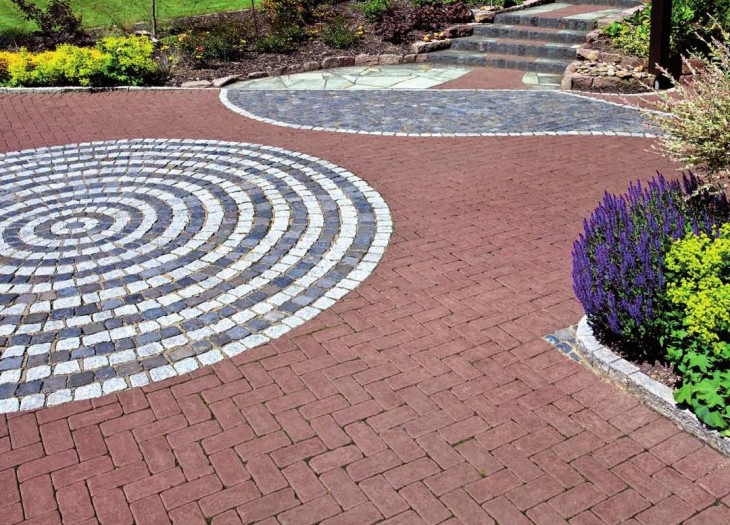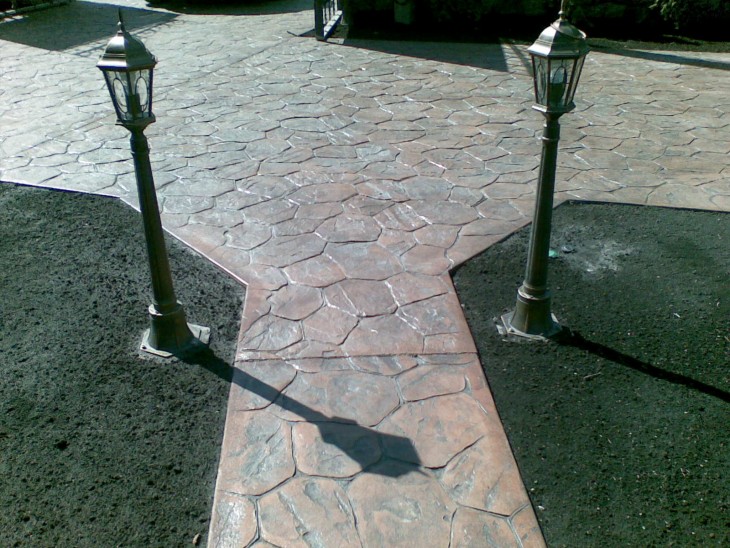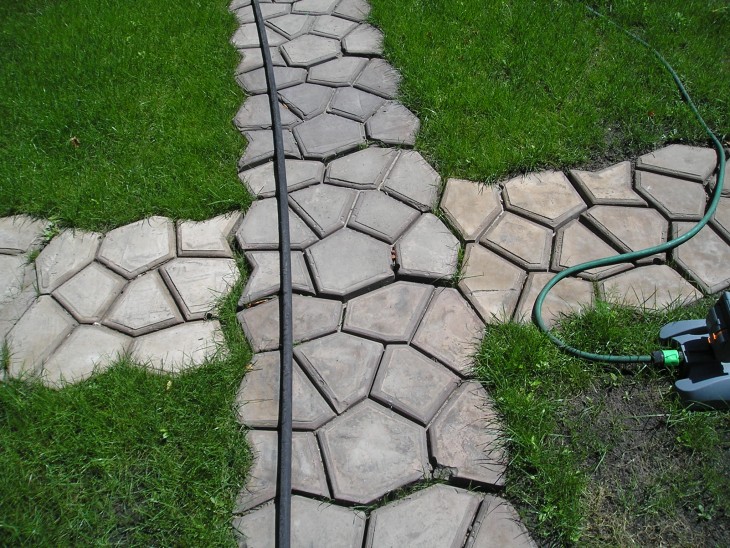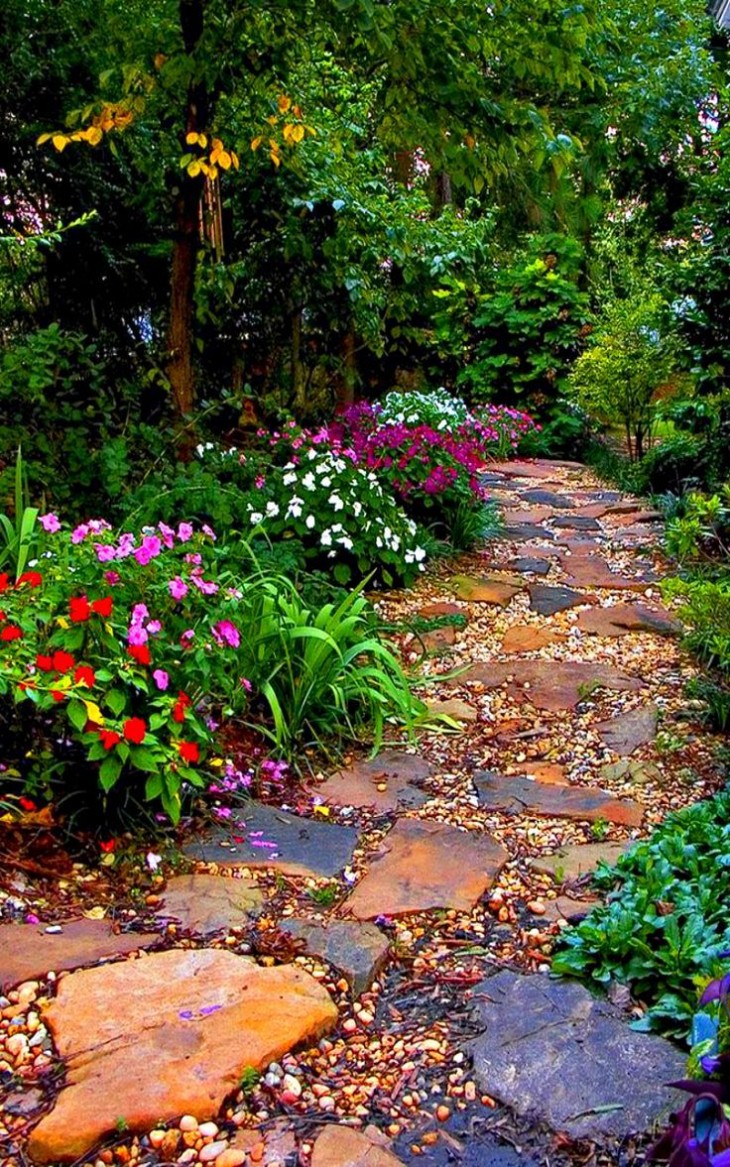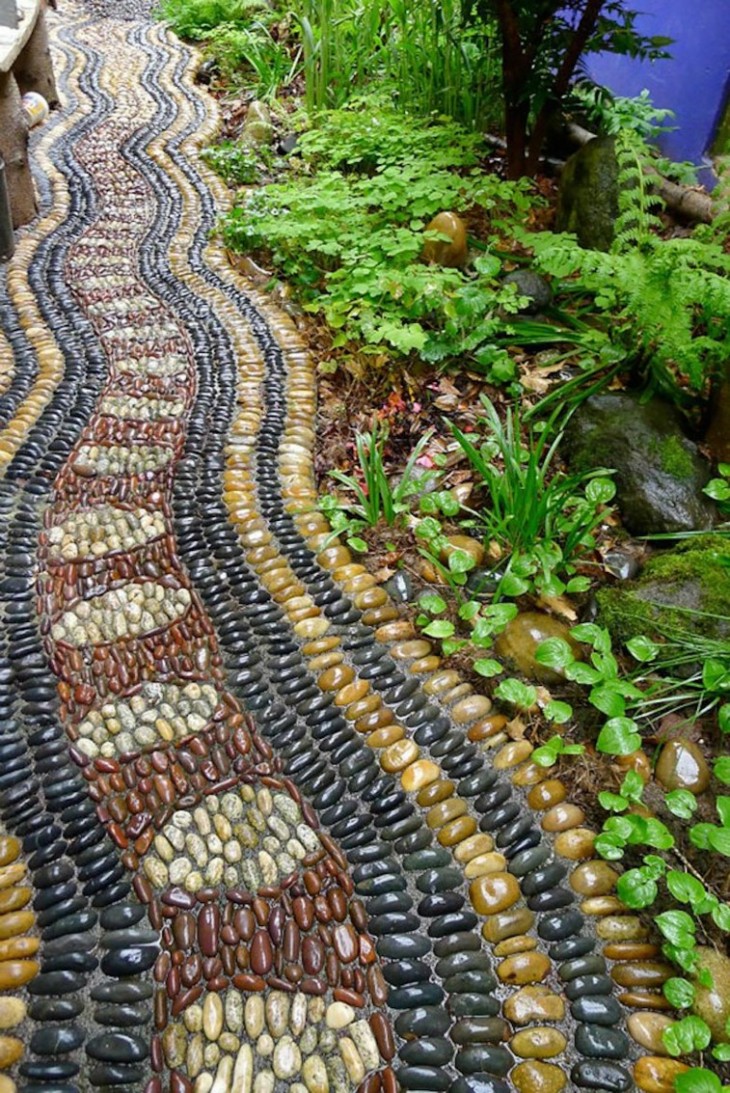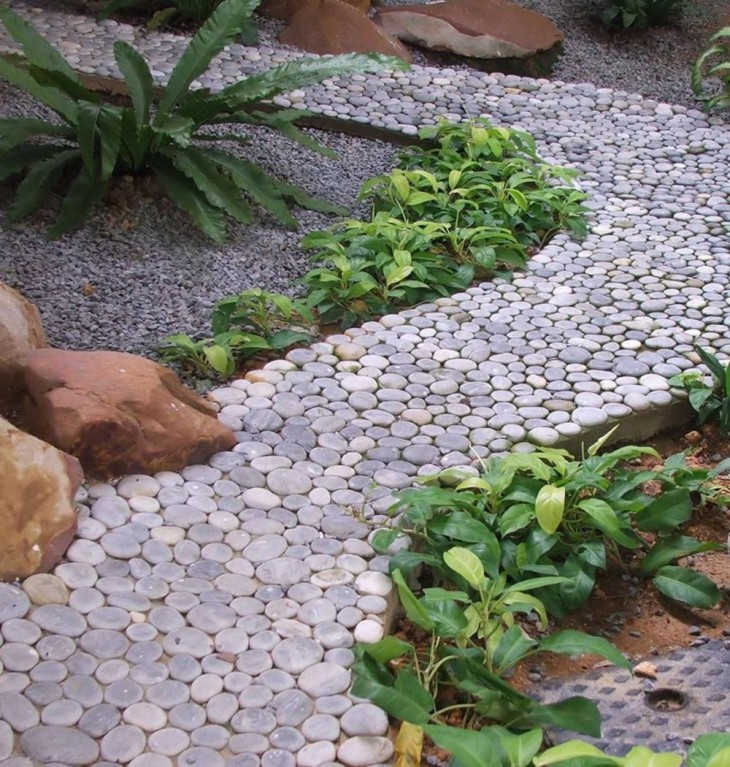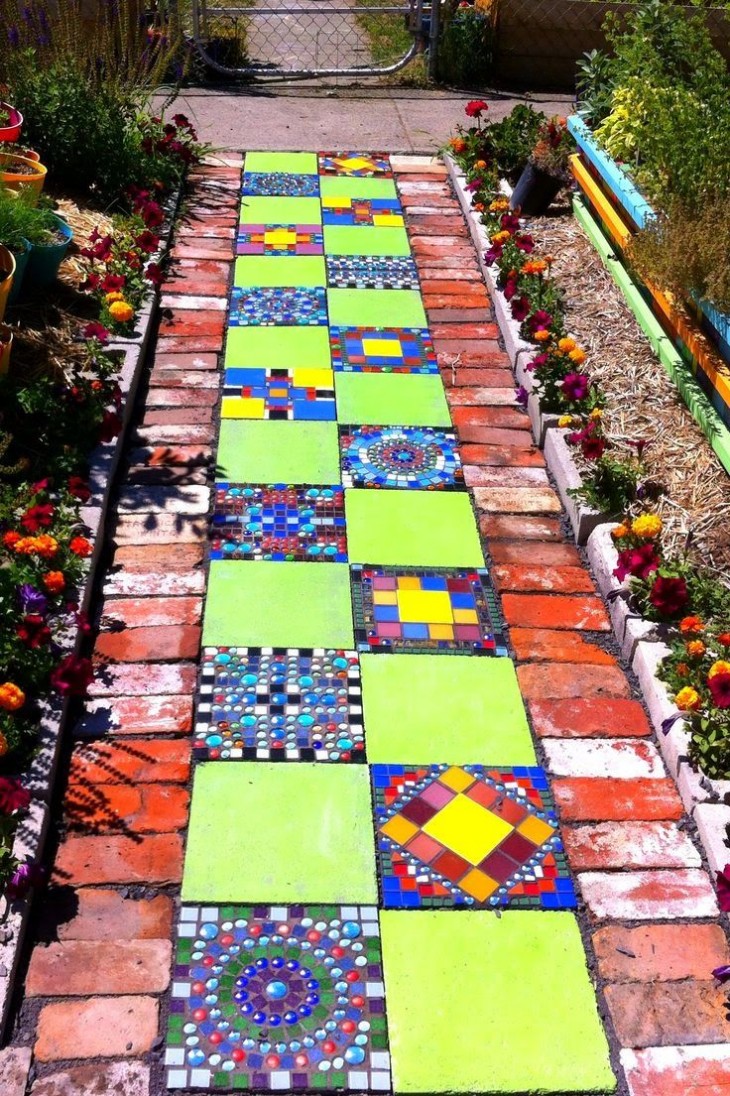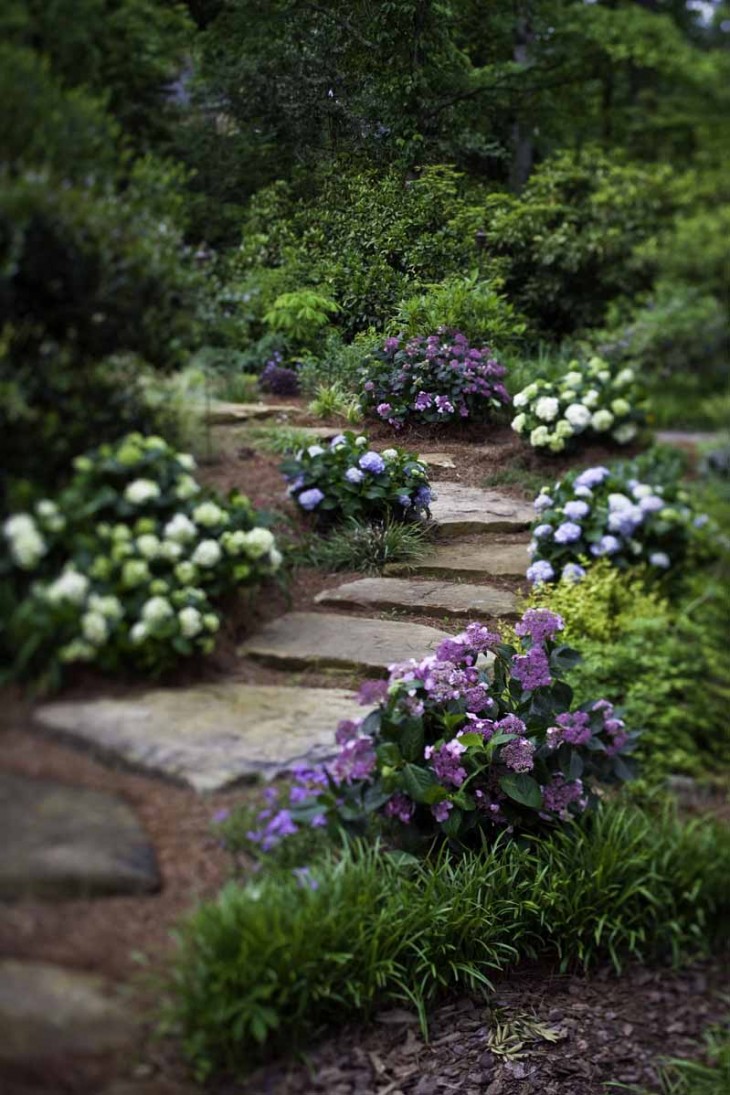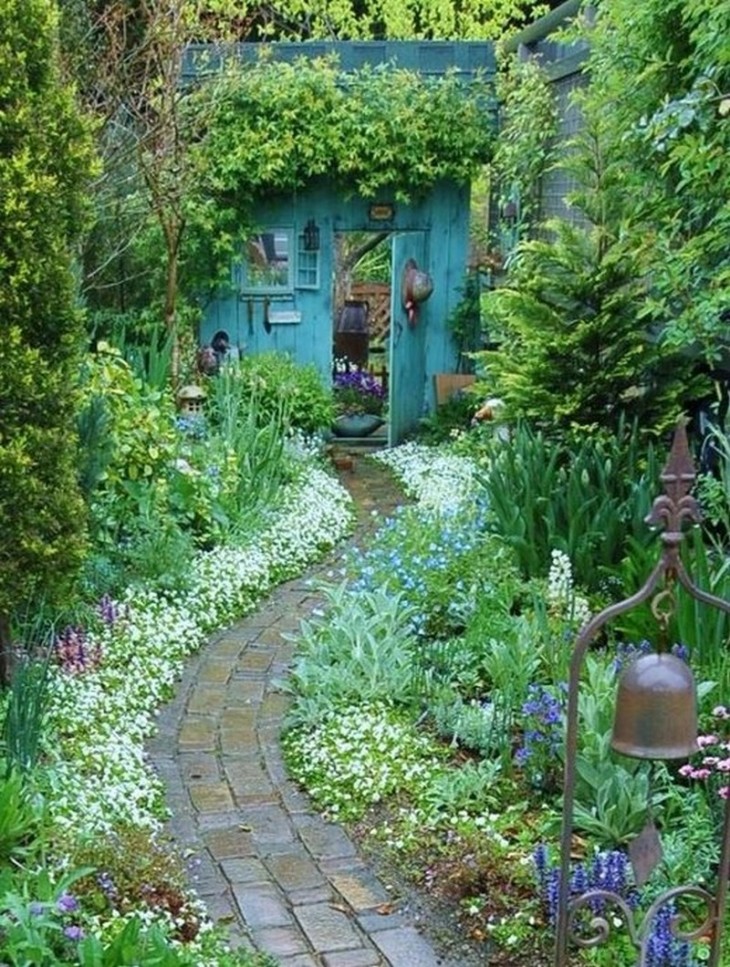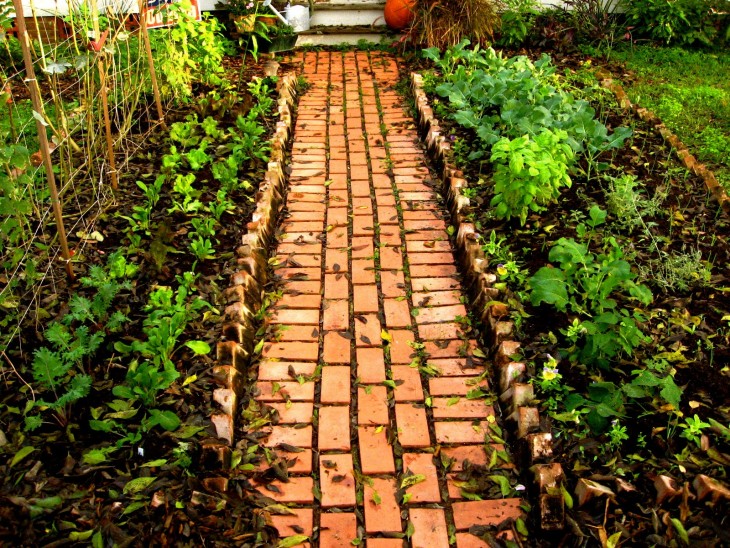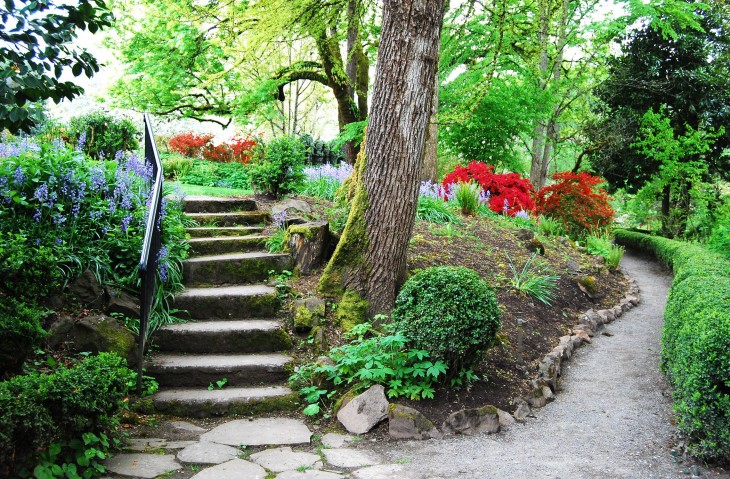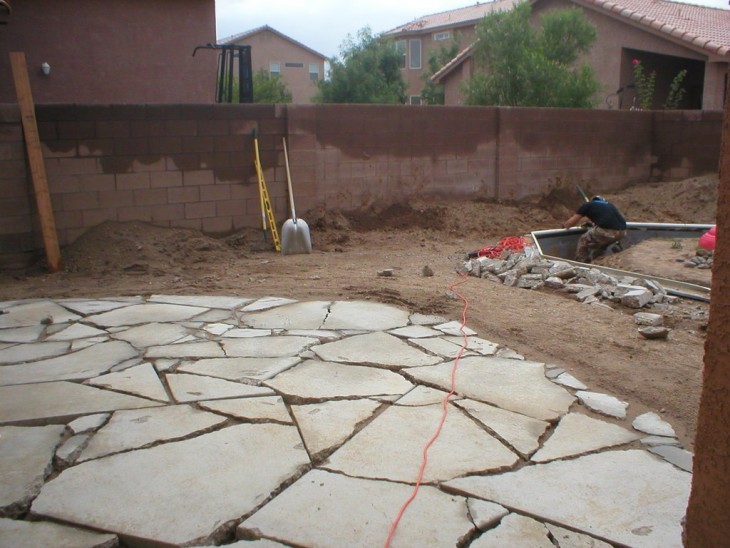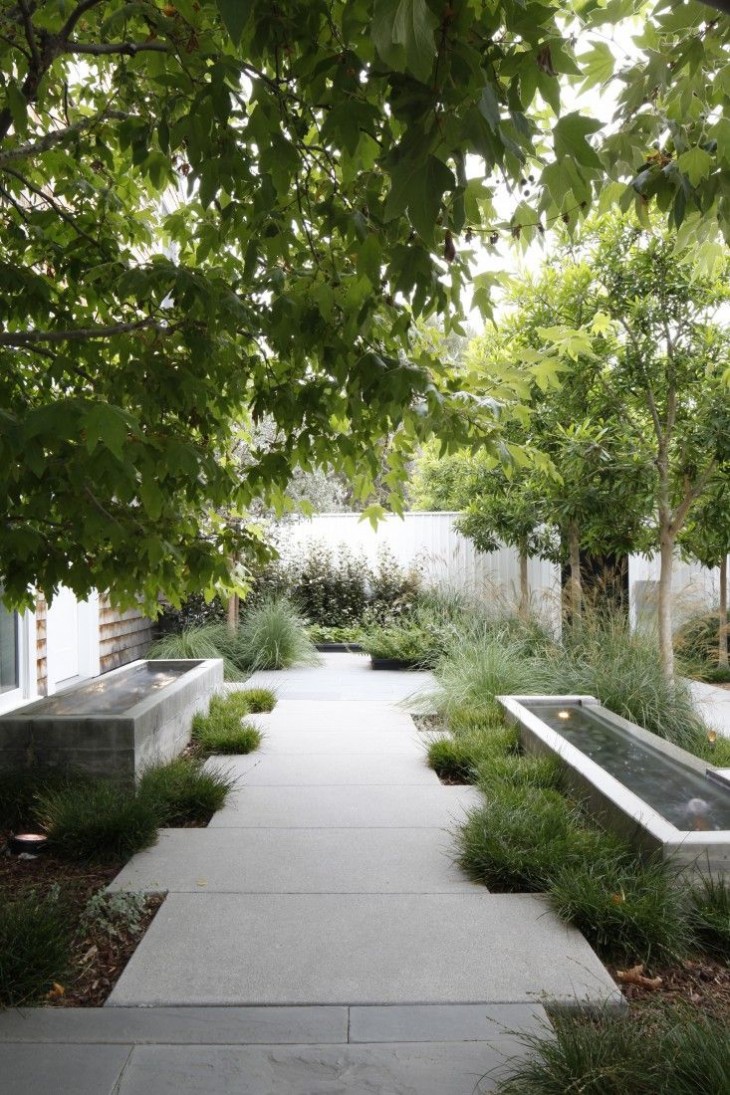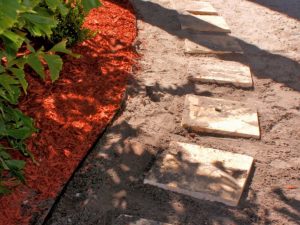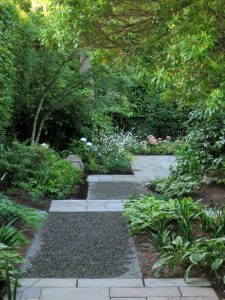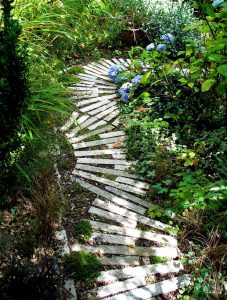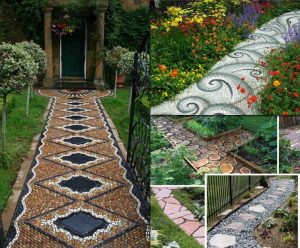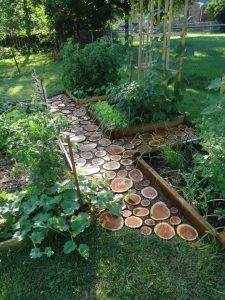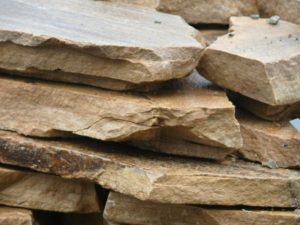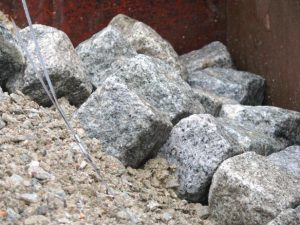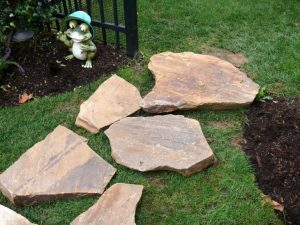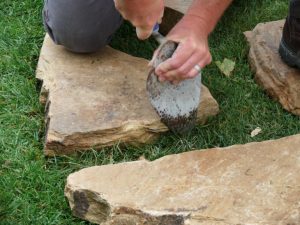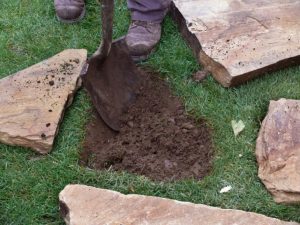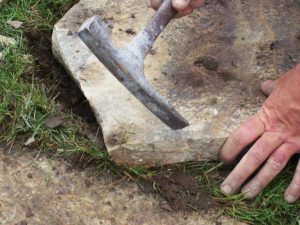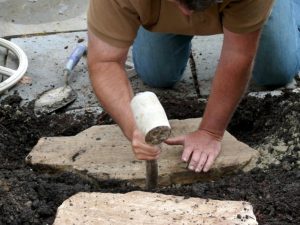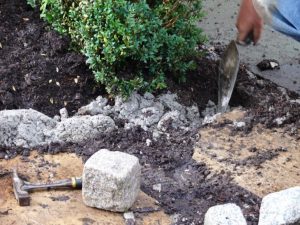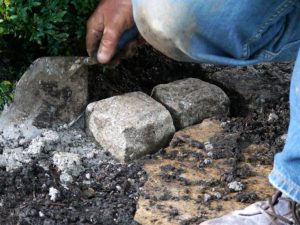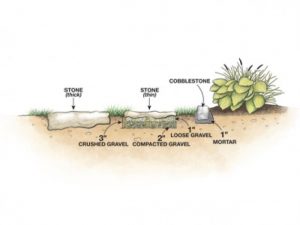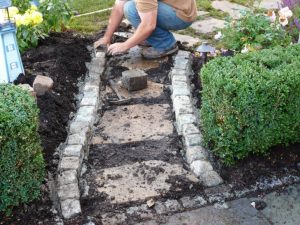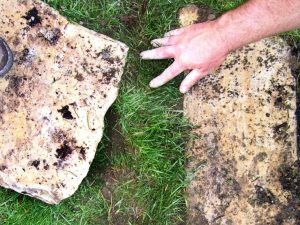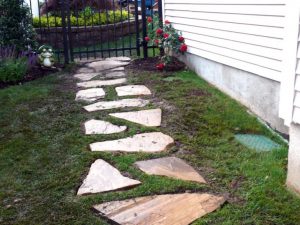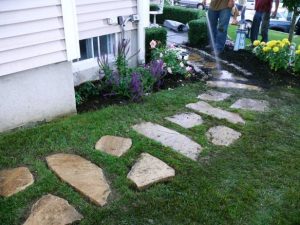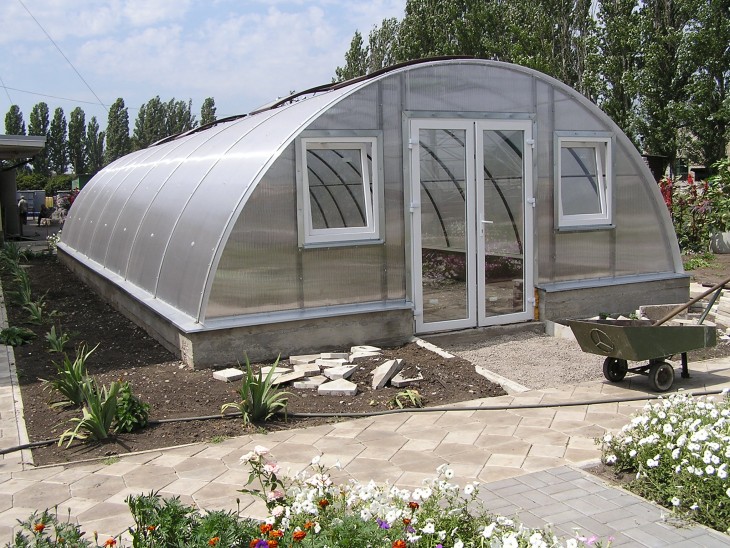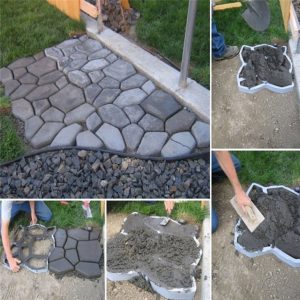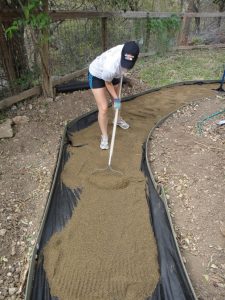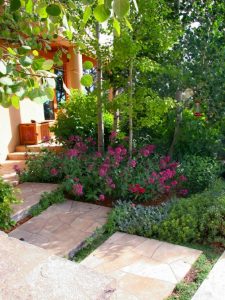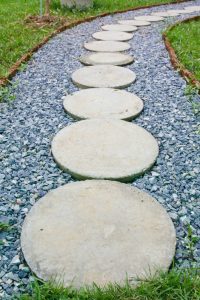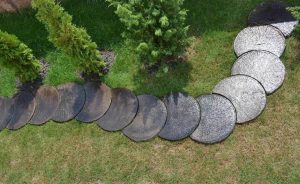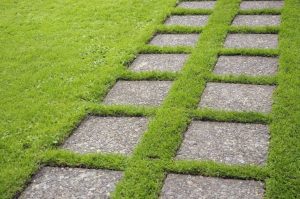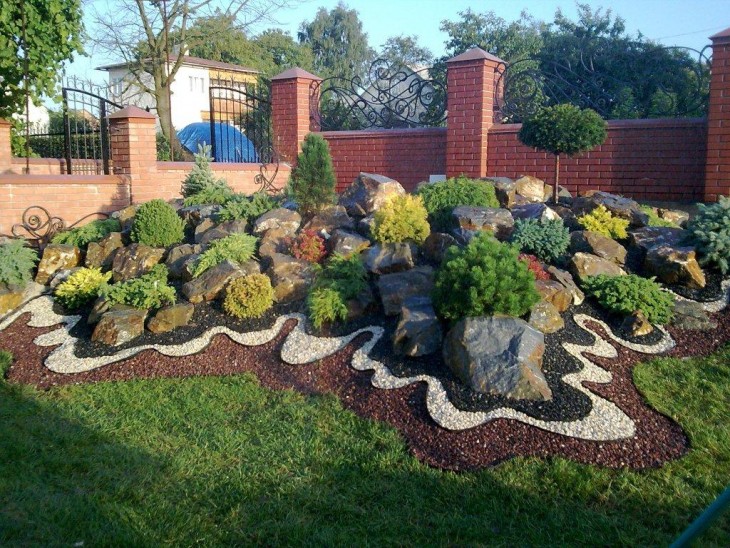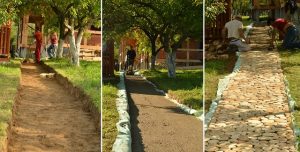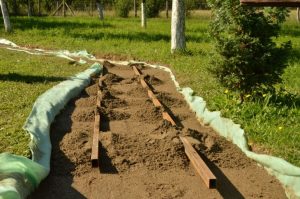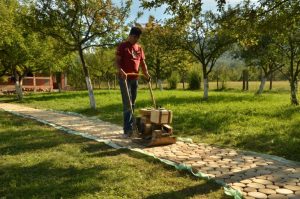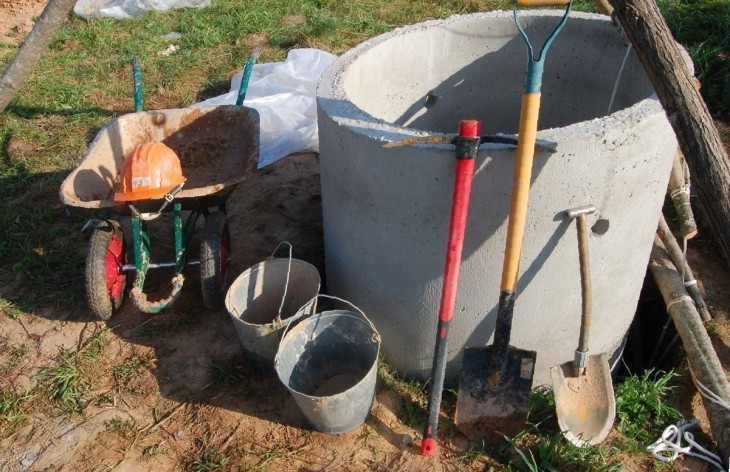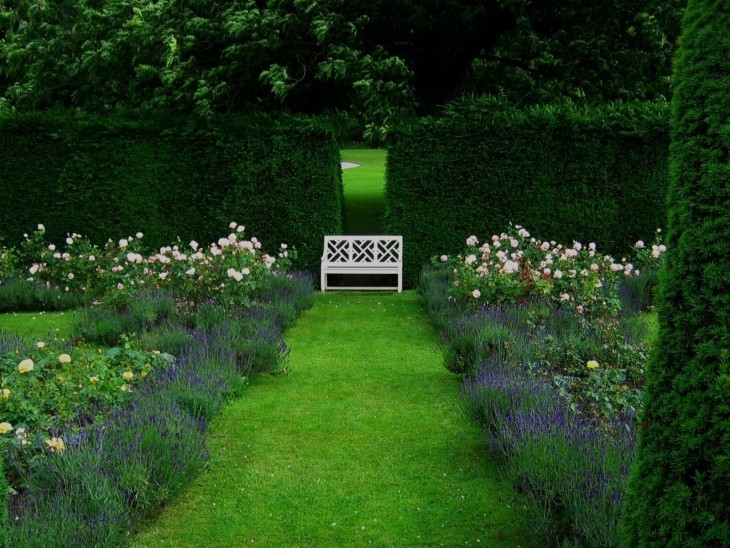Each person with a suburban area wants his cottage to be equipped and well-groomed.
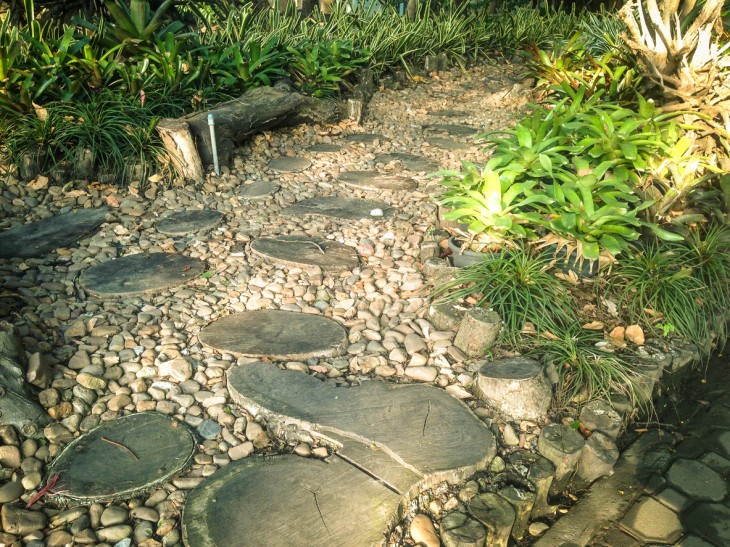
The Internet is full of articles with various options for landscaping summer cottages with photos of beautiful garden paths, but it is not clear how to do this yourself.
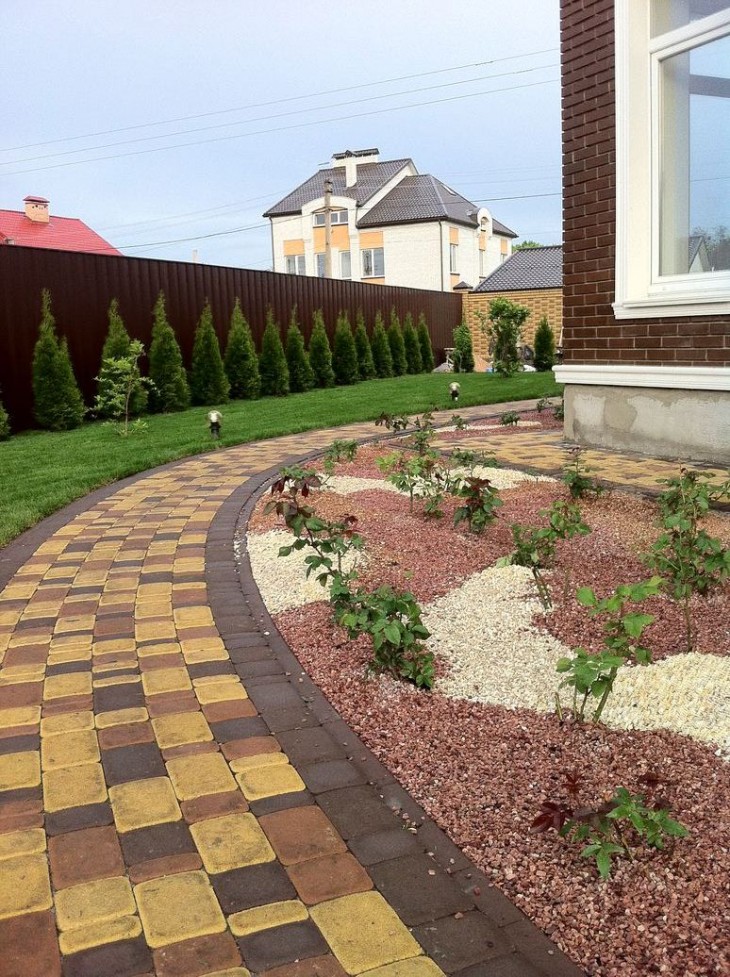
The services of designers are quite expensive, but meanwhile I would like your garden to be somewhat different from others. Original garden paths give any garden an original look.
Review Content:
DIY garden paths
To equip the plot with garden paths, you will not need large cash costs, especially if the cottage has suitable materials for this.
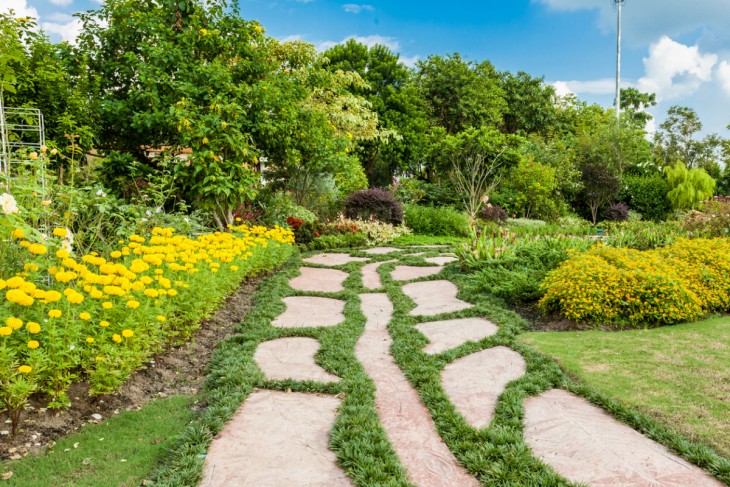
You just need to turn on your imagination and carefully examine the contents of the attic and other places where suitable elements for making paths can be stored.
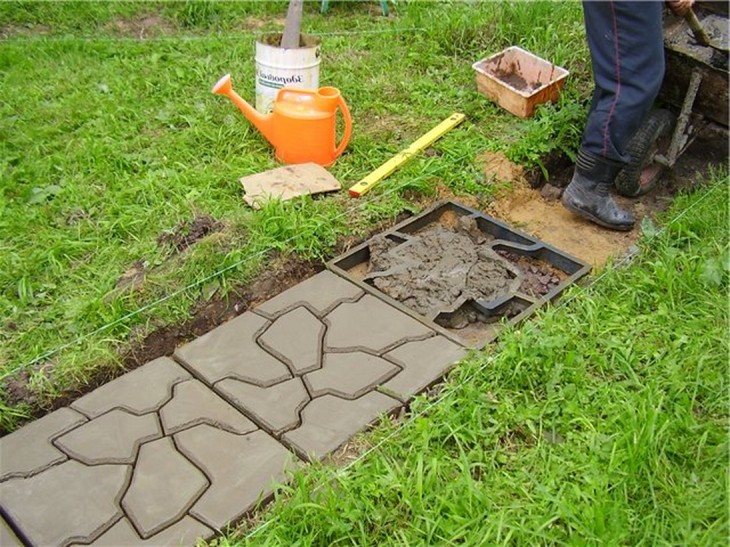
There are a huge number of options for garden paths, the choice depends on the taste and capabilities of the owner of the cottage.

How to make a garden path with your own hands
The easiest way is to make a path out of gravel. To make it, you will need:
- Pebbles or expanded clay;
- Geotext or densified film;
- Sand;
- Frames made of wood or concrete (sides) for paths.
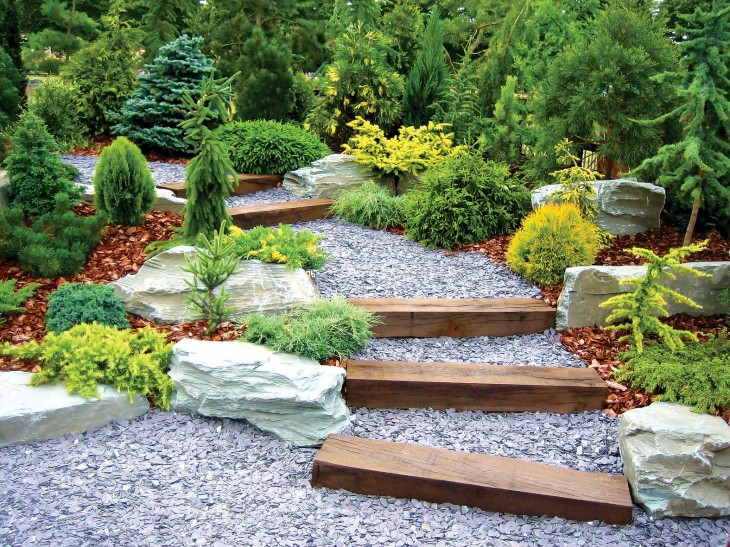
First you need to think through the design of your garden paths. The track should be conveniently and harmoniously located.
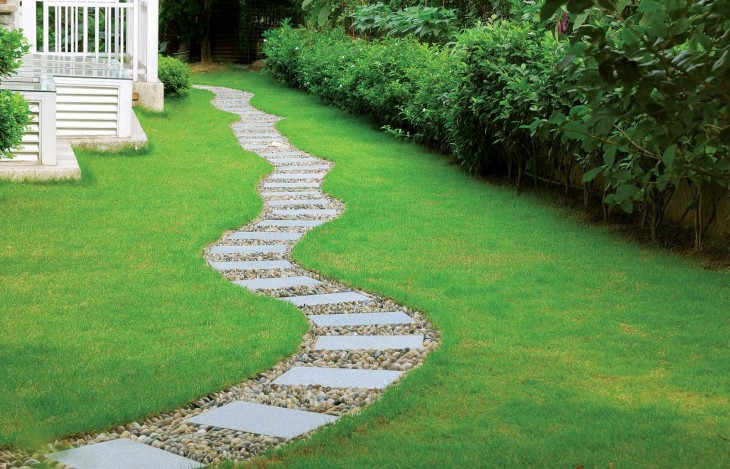
To make a quality track, all steps must be performed step by step:
- Make markings for your future path. If you plan to make it curvy, then draw all the convolutions.
- On either side, dig in wooden blocks or concrete beams.
- The top layer of turf should be removed along the entire length of the path with a depth of about 15-20 cm.
- A geotextile or dense film is neatly laid along the path, the edges should be laid under the sides of the path.
- The cleaned surface is covered with a 5 cm layer of sand. After that, the sand is leveled.
- The prepared surface is covered with gravel.
- Gravel is rammed with a roller or a regular shovel.
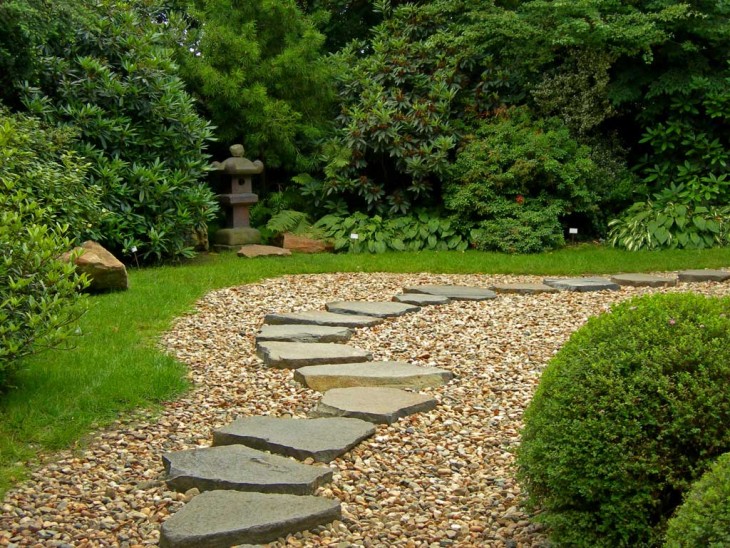
Natural stone garden path
Natural stone is one of the best natural materials. It fits perfectly into the surroundings.
It is better to order natural stone from trusted companies, we recommend it to specialists.
Stone tracks are the most durable. This allows them to maintain their appearance for many years. To make such tracks you will need:
- Cobblestone chipped or but;
- Some sand.
Garden paths made of natural stone
Track marking is the first thing that work should begin with.
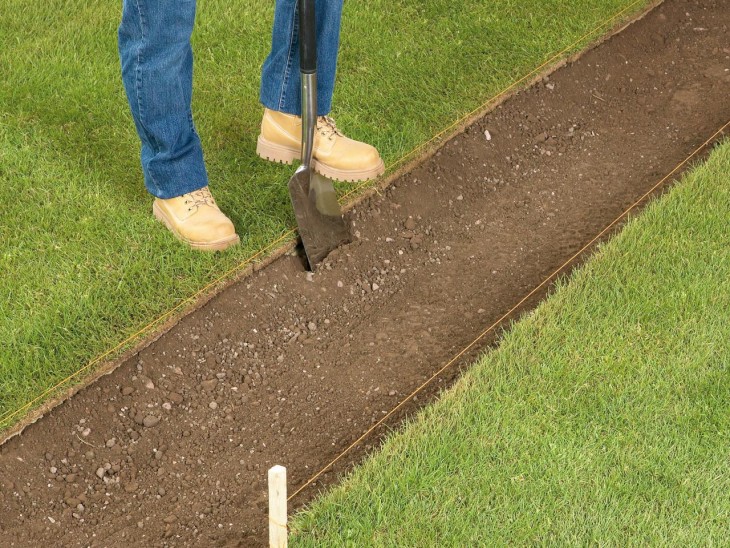
You need to remove the turf from the entire area intended for the track. Depth depends on the size of the largest stone for the path.
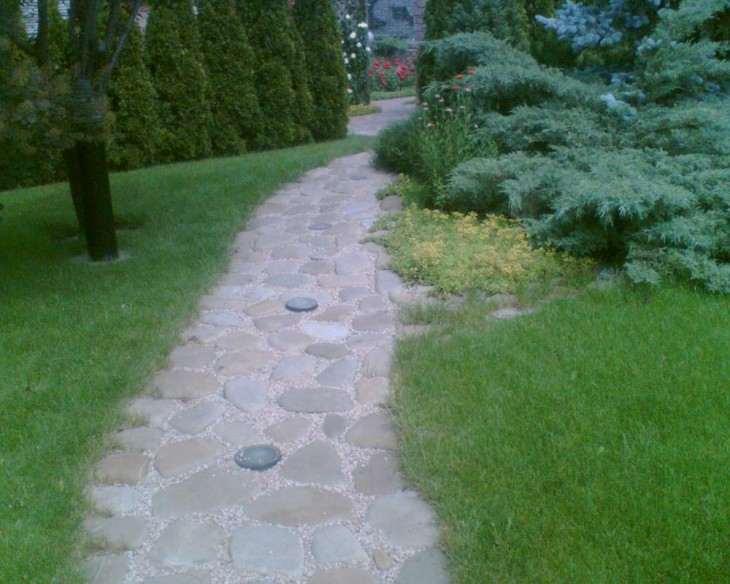
Fill the area of the path with sand, and then proceed to leveling. The thickness of the sand layer should be about 10 cm.
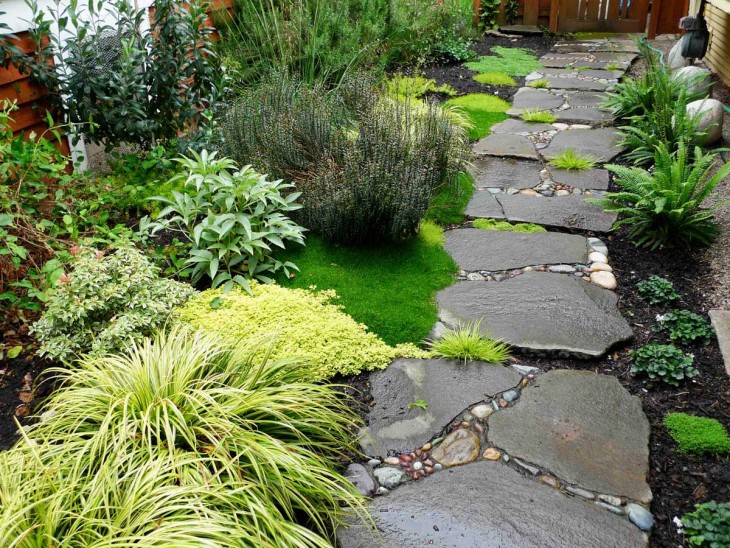
Stones are laid out on the sand. It is necessary to press cobbles into the thickness of the sand.
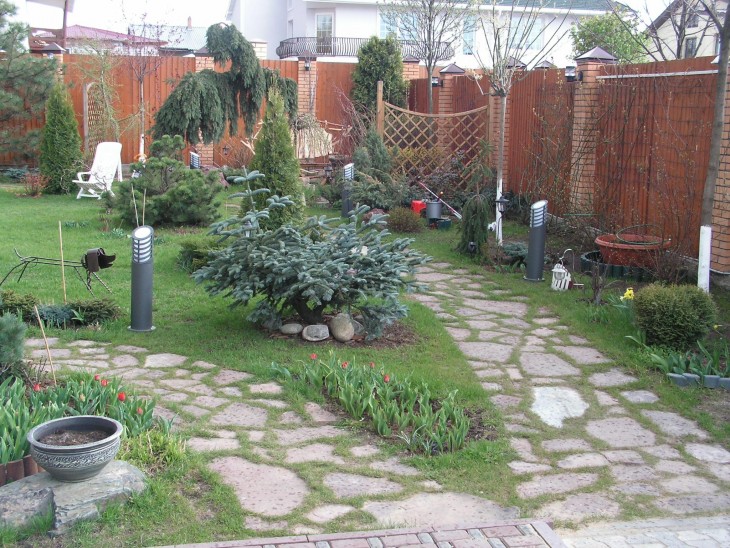
Between the stones you can leave gaps in which the earth falls asleep. Many sow this land with fine grass.
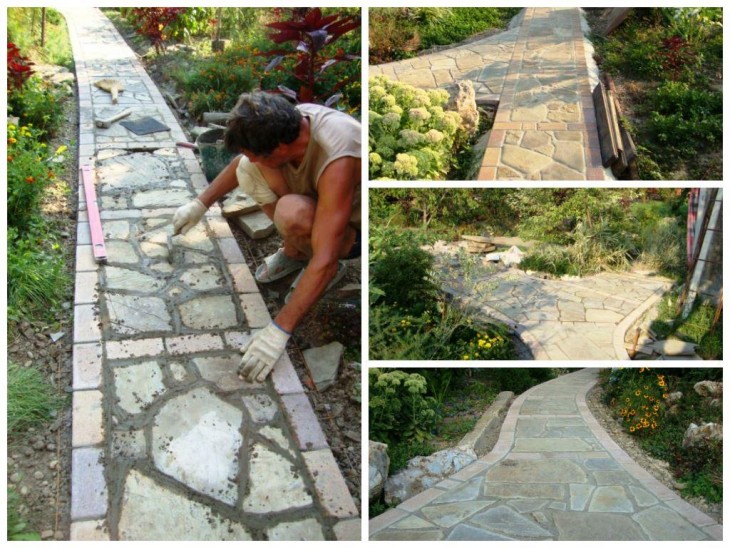
Note!
If the stone is not very large, then gaps of 2-3 cm will be sufficient. In the future, these joints can be repaired with a cement mortar.
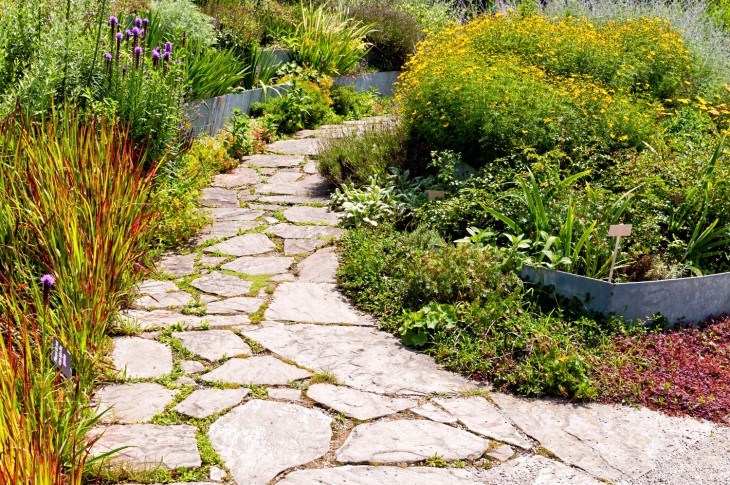
Concrete Garden Paths
In order to make a concrete garden path, you can use the form for the garden path, which is a plastic frame. This is a very convenient device, greatly simplifying the whole process.
Materials required for the concrete track:
- Sand;
- Crushed stone or gravel;
- Water,
- Cement.
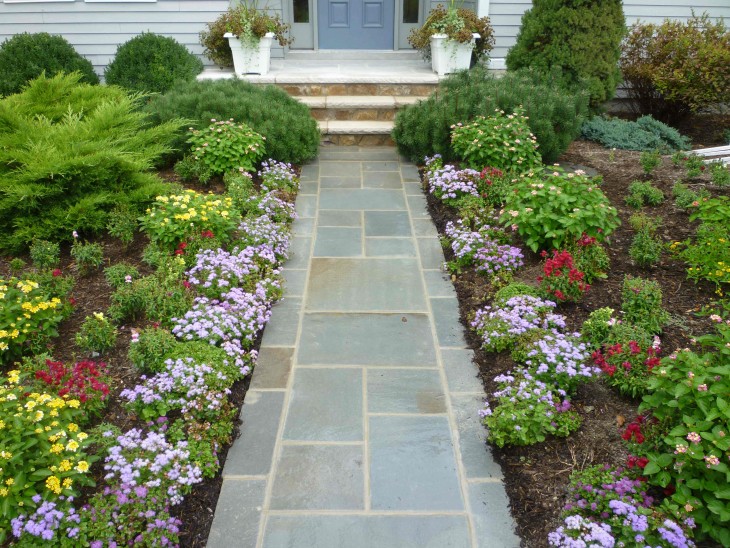
How to prepare a place for a concrete path?
This track is being prepared as well as the gravel track. But the trench for it should be wider in comparison with the dimensions of the finished track - about 20 cm.
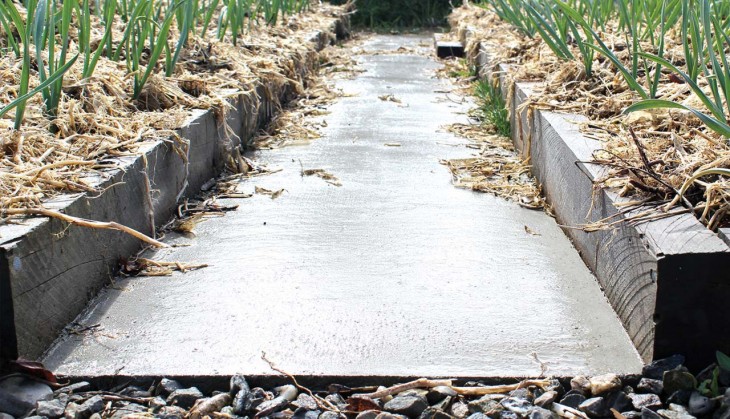
Next begins the direct manufacture of the path:
- Remove excess earth from the trench and tamp the bottom.
- To fix the formwork, use wooden pegs located along the length of the track on both sides.
- Crushed stone with a thickness of 5-10 cm is poured to the bottom. These figures should not be exceeded.
- To prevent concrete from cracking in the future, the formwork is reinforced with slats. The rails are installed transversely through 2.5-3 meters.
- Further, a form for concreting is superimposed on top.
- The form should be poured as evenly as possible with a cement solution, without leaving empty gaps.
- After finishing one section of the trench, proceed to the next, covering the finished gap with plastic wrap, to avoid debris getting onto fresh concrete.
- After two weeks of waiting, the formwork needs to be removed.
- The remaining areas between the plates can be covered with soil or plant grass there.
- Those spaces that remained from the trench on the sides are covered with pebbles or laid out with bricks.
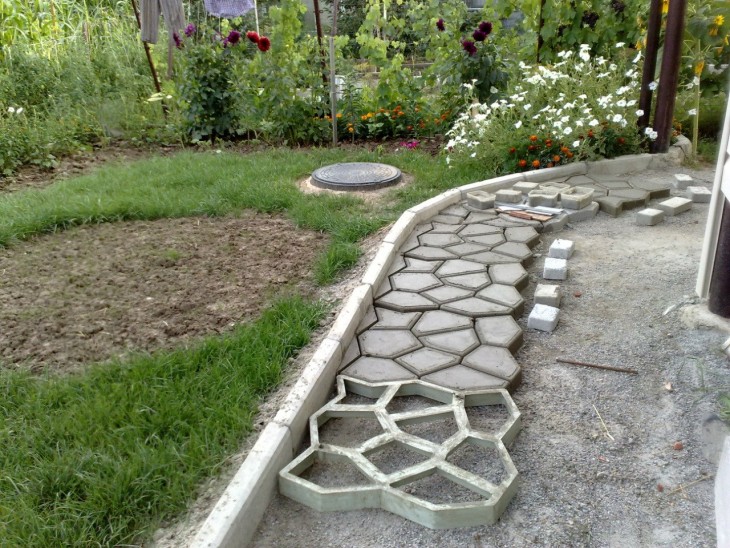
Wooden paths for the garden
Wood is the most easily accessible material for the construction of garden paths. The rich variety of colors and textures of wood allows you to unleash your imagination.
Note!

Wooden garden paths can be created from processed planks or from simple tree cuts. Laying methods for such tracks are slightly different from each other.
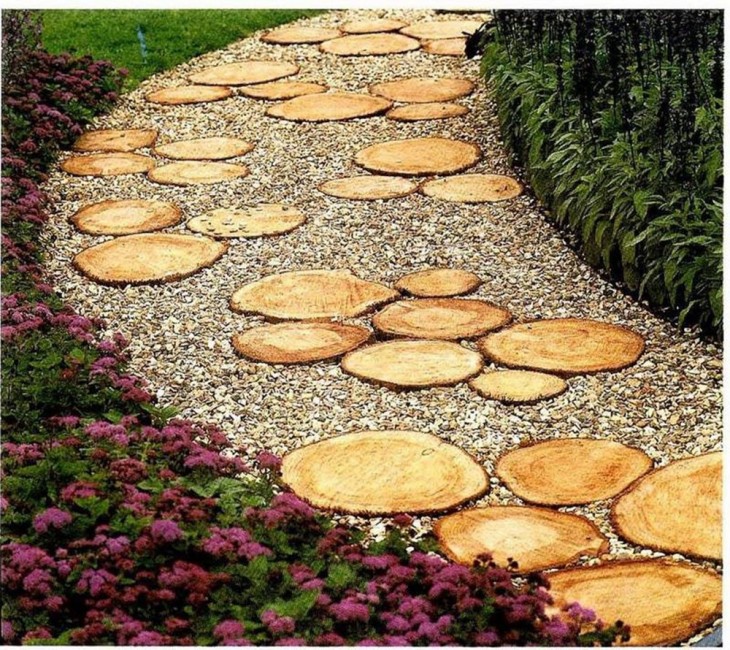
Hemp track
Tree or hemp cuts can be used to create original paths for your garden. In the manufacture of such tracks, follow the step by step instructions:
- The material for laying the garden path needs to be treated with an antiseptic, since the tree does not tolerate contact with damp earth. Wood processing with 10% vitriol will increase the protective properties of wood. For the same purpose, bitumen is used. You can purchase material already treated with an antiseptic.
- Mark the area of the track and remove the top layer of earth.
- Dig a trench 30 cm deep.
- Spread film or geotextiles all over the track.
- Fill the film with a ten centimeter layer of crushed stone.
- A layer of sand is applied to the rubble, which should be moistened and compacted.
- Now you can lay out the cuts. The remaining gaps between the saw cuts can be covered with earth or gravel.
The path from the boards is prepared in the same way as the garden path from saw cuts of trees, only the boards are stacked vertically.
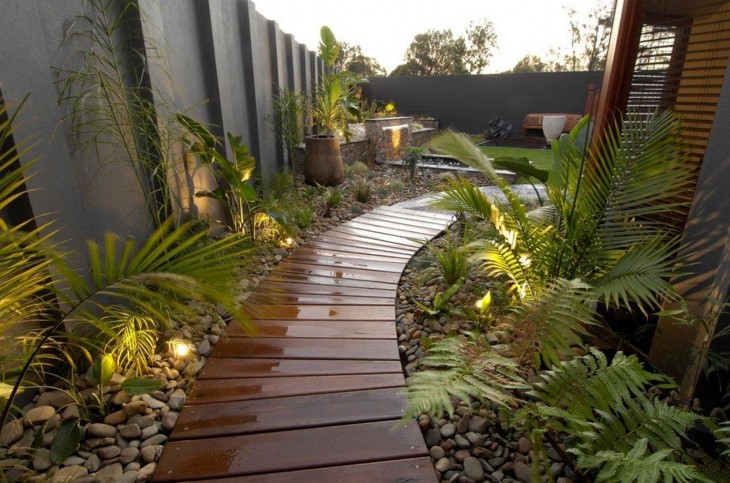
Whichever option you choose, it is important to do all the work on the garden plot with a good mood and inspiration.
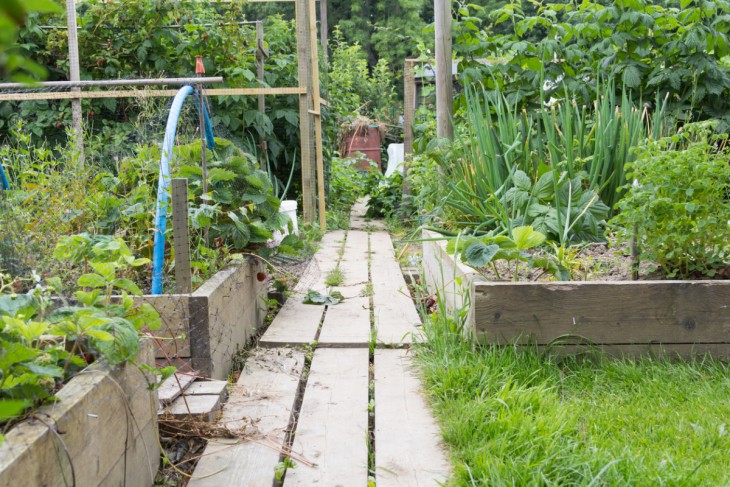
After all, a summer residence is a place for the restoration of mental and physical strength. Every corner of its square should be pleasing to the eye and inspire new ideas.

Note!
DIY garden path photo
